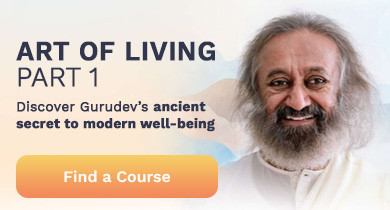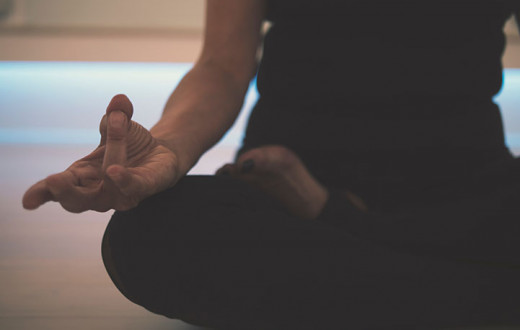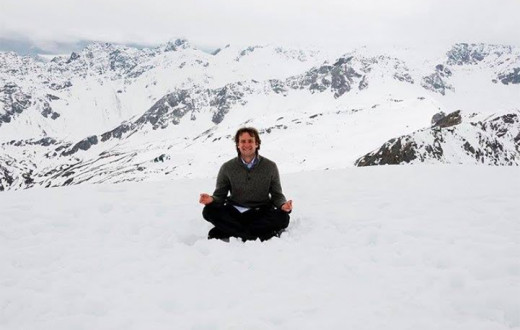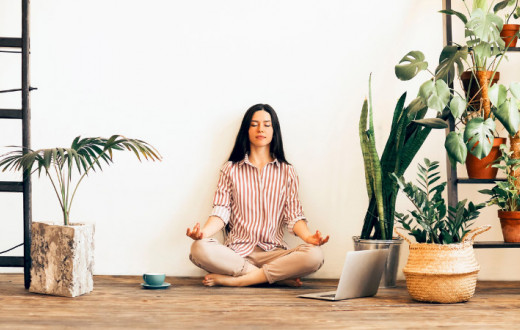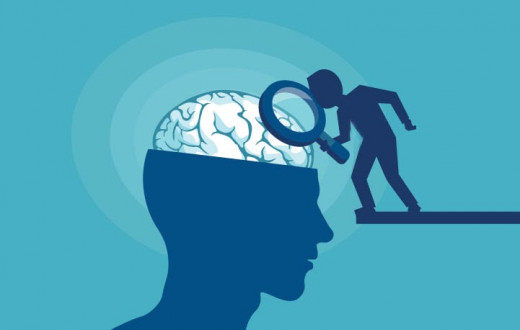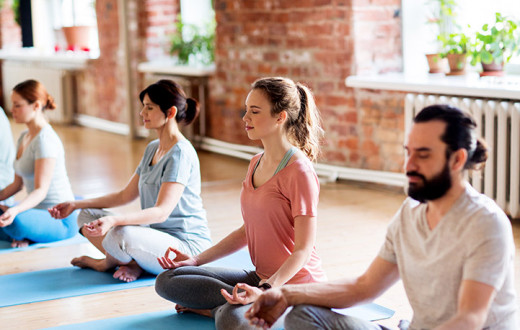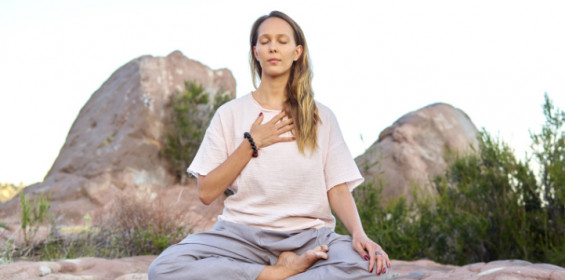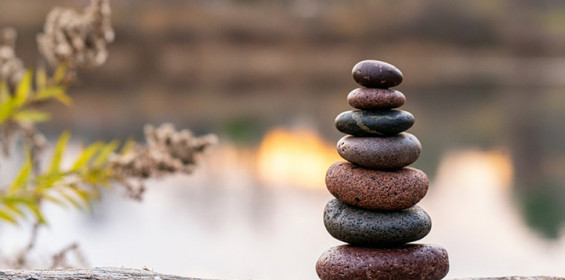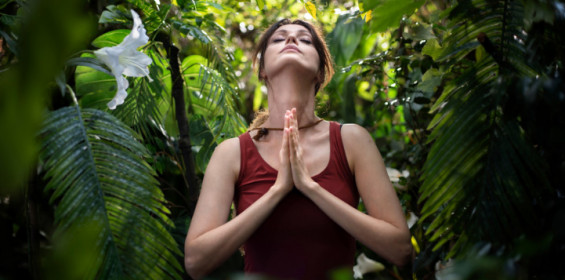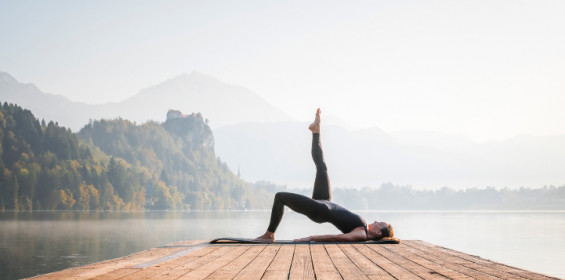
Meditation has many benefits, including lower stress levels, improved emotional resiliency, better relationships, and overall health. We are here to help you start your meditation journey and live your best life. Let’s start!
Topics covered:
- What is meditation?
- Why learn to meditate
- How to meditate
- Meditation techniques
- FAQs, tips, and remedies
- Basic guided meditations
- Continue your meditation journey
- More guided meditations
- There’s an app for that
- Learn to meditate with the Art of Living
- Related articles
What is meditation?
According to Art of Living Founder Gurudev Sri Sri Ravi Shankar, meditation is a skill, an art, and a journey.
Meditation is the skill of calming the mind and getting in touch with your inner joy, the source of the energy within you. When the mind becomes calm and serene, it accesses the enormous intelligence and energy we all possess.
Meditation is the delicate and effortless art of doing nothing. It is a way to take a deep rest while remaining alert and conscious.
Meditation is the journey from movement to stillness, from sound to silence. Beyond all the chatter and noise in our minds, there is a silent, peaceful, blissful, beautiful space that exists in all of us, a place that is intact and unbroken. Turning our attention to this silent chamber is meditation. This silence cleanses the mind, giving it a much-needed rest, and makes room for better perceptions and new ways of looking at life and its challenges.
Why learn to meditate?
The medical community widely recognizes the benefits of a meditation practice. Here are some benefits you can experience when you learn to meditate and practice regularly.
How to meditate
The first thing to know is that EVERYONE CAN MEDITATE! The second thing to know is, yes, even you can meditate. But the most important thing to know is not to try to meditate. The emphasis here is on the word “try.” Trying indicates effort. And as long as you exert effort, meditation cannot happen.
Meditation master Gurudev gives us three secret keys for how to meditate. Start every meditation with these three intentions.
I want nothing.
I do nothing.
I am nothing.
When we want nothing, the mind can settle down instead of chasing after so many desires. If you try to do anything with effort, from the level of the mind, your meditation will never begin. And for just these few minutes of meditation, drop all the roles we play throughout the day. These three keys— I want nothing, I do nothing, and I am nothingTM—are the perfect preparation for successful meditation.
Basic instructions
- Sit with your spine straight but relaxed
- Close your eyes
- Be aware of your surroundings
- Accept any noises around you
- Take a deep breath in and let go
- Shift your attention inward
- Take a deep breath in and let it go
- Remind yourself of the three keys, “I want nothing, I do nothing, and I am nothing”
- Continue to observe your breath
Meditation techniques
Guided meditation
Just close your eyes and let the person guiding your meditation session do all the work. This technique is a simple practice and likely the most used, at least in the US. However, not all guided meditations are created equally. Some guided meditations are just relaxing sounds and visualizations— not true meditation. Others can take you deeper into the meditation experience.
Unguided meditation
This technique could be on your own or in a group, often after learning a specific technique that can be practiced unguided.
Mantra-based meditation
This meditation technique uses sound internally as a vehicle for meditation. When it comes to mantra meditation, it’s important to choose a time-tested technique from a well-trained meditation teacher. Mantras that have been around for thousands of years are the most powerful and the most tried and true.
Breath-based meditation
Breathwork is a valuable tool for meditation. Some basic breath meditation techniques prep you for meditation; others are deep meditative experiences.
Other meditation techniques
Mindfulness meditation, walking meditation, loving-kindness meditation, and chakra meditation are common meditation techniques.
FAQs, tips, and remedies
What is the best time to meditate? The best time to meditate is early in the morning, before you’ve eaten breakfast and while it is still fairly quiet. But if that isn’t possible for you, then any time as long as your stomach isn’t busy digesting and it isn’t too close to bedtime. With that said, some people can meditate right before bed and still be able to fall asleep. See what works best for you.
How long should I meditate for? Ten minutes is enough time to start, giving the mind and body enough time to settle down. Those who say that 30 seconds or one or two minutes to meditate are really promoting brief mindfulness moments. Meditation happens gradually. Once you are comfortable with 10 minutes, you can increase to 20.
What is the easiest meditation technique to start with? Many start with guided meditations, but the pitfall is that some meditators think this is as good as it gets and never get to experience the depth that other techniques offer. Another misconception is that the other techniques, mantra-based and breath-based, are too advanced. The reality is that any beginner can learn these techniques, and their experiences grow and expand over time.
What do I do with my eyes? If you have trouble keeping your eyes closed, you have two options. You can tie a bandana around your eyes or wear an eye mask. Or, you can start with your eyes open at about 45 degrees in front of you. Observe your breath while your eyelids get heavier. After about one to two minutes, you can more easily close your eyes.
I can’t seem to sit still; what will help me settle down? This is a common concern among new meditators. Avoiding caffeine a few hours before meditating can help a lot. Going for a walk or doing some yoga can also help. Another fast and easy way to settle down is to shake your hands for about 30 to 60 seconds before you close your eyes for meditation.
What if I fall asleep during meditation? Are you sure you have fallen asleep? Sometimes, deep meditation can feel like you have drifted into sleep. If you come out feeling dull with drool on your face, you have likely fallen asleep. Otherwise, you probably experienced deep meditation. Make sure you are getting enough sleep at night if you do experience drool!
Can I lie down to meditate? Not unless your goal is to fall asleep. The only exceptions are with body scan meditations, aka yogic sleep, and when you are ill. Meditating from bed in a reclining position is okay if you are not feeling well.
Do I have to sit cross-legged, or can I sit in a chair? You do not have to sit cross-legged! You are good to go as long as you are upright with a straight but relaxed back. Be comfortable.
What should I do if my mind wanders? If your mind wanders, that’s perfectly normal. As soon as you become aware that your mind is wandering, come back to your technique or observe your breath if you are not using a meditation technique.
Which meditation technique should I start with? While many people start with guided meditations, you can also easily start with a mantra-based meditation or breath-based meditation technique.
Basic guided meditations
Meditation for beginners
If you are interested in a simple meditation, here’s an excellent beginner's meditation led by Gurudev.
Body scan meditation
The original body scan is called Yoga Nidra, which means yogic sleep and gives the experience of effortless relaxation. It is often used at the end of a yoga session. It can also be used as a tool for falling asleep.
Continue your meditation journey
Group meditation practice
Meditating in a group is even more powerful than by yourself. But you do not have to be in the same room to benefit from the added depth. Group meditation sessions online are surprisingly powerful, in part because, on one level, we are all connected. Joining a group practice once a week is an excellent way to strengthen your daily practice.
Add-ons
- Yoga is a perfect way to start to settle both the body and mind prior to meditation.
- Breathwork brings the mind to the present moment and sets the stage for meditation.
- You can chant three Oms aloud as you sit for meditation, settling both the mind and the environment.
Breathing exercises for meditation practice
If you think of the mind like a kite, the breath is the string—just a little tug on the string, and the kite moves. Like that, the breath can calm or energize the whole system.
All breathwork brings you into the present moment. Breathwork or breathing exercises are called pranayama in Sanskrit. Prana means subtle life energy, and yama means to control. Here are two pranayama breathing exercises you can try for yourself.
More guided meditations
Read our article, Guided Meditation: Help for Anxiety, Stress, Sleep, and More, for twenty-four free guided meditations for all your needs.
There’s an app for that
What’s better than articles with lots of meditations? We have an app with meditations and so much more. Check out the Art of Living Journey app!
Learn to meditate with the Art of Living
By now, you must want to learn how to meditate on your own. Register for the Art of Living Part 1 course to learn pranayama, 5 Keys to a Joyful Life, and SKY Breath Meditation. SKY uses the breath to experience deep meditation effortlessly. Here is a short list of the benefits millions worldwide have enjoyed.
Start your meditation habit today and gift your body, mind, and spirit the well-being you are looking for!
Related articles
Meditation Classes Near Me for Peace of Mind, Body, and Heart
The Best Meditation Position for Your Body and Practice
Meditation for Kids Can Help With Focus, Sleep, and Stress
How to Stop Worrying and Live In the Present With Meditation

